Saadi Tomb | an Oasis of Serenity
Saadi Tomb is located in Shiraz city. Better known by his pen name, Saadi, the Iranian poet and prose writer lived in the 13th century, and passed away in his hometown Shiraz, where his current mausoleum has become one of the top Shiraz attractions.
The Tomb of Saadi, the great Iranian philosopher and poet tranquilizes every soul that enters there. Among the Iranians Saadi poet is well respected as well as Saadi poems which are mostly used as proverbs among the people of Iran. In this post, we have included all the helpful information on the Tomb of Saadi such as Saadi Tomb address and Tomb of Saadi opening times.
+_
If you wish to travel to Iran, we as an Iranian tour operator, invite to check out our Iran tourism packages:
>> Iran Tours 2020 & 2021 (Click Here)
Legacy of Saadi
The great land of Iran has always been a cradle for culture, art, and poetry; and many have risen to create eternal masterpieces. Saadi is one of these men whose fame and poetry precede him. Many of the Iranian idioms and sayings are derived from his writings such as “to niki mikon o dar dejle andāz ke izad dar biyābānat dahad bāz” which matches “What goes around, come around.” And it literally translates as “You toss charity in the Tigris, and God shall return it in the desert.”
The eloquence of Saadi’s works annually attracts thousands of visitors who respect Saadi poet. To honour the memory and works of Saadi, April 21st is celebrated as the national day of Saadi in Iran, every year.
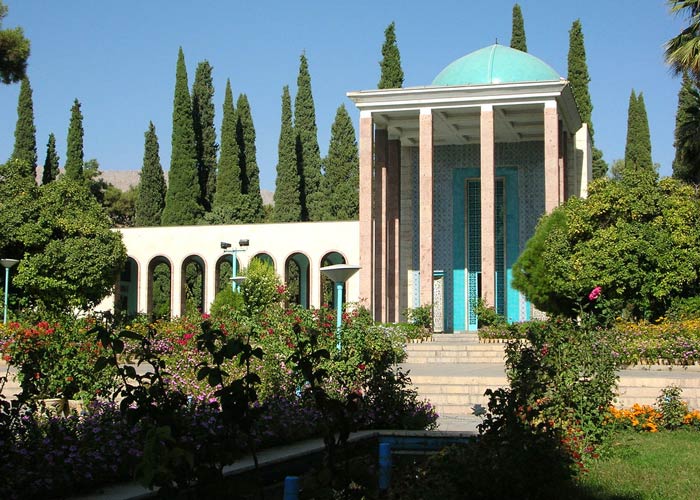
Photo by @@hamidreza R on Flickr
#1 Tomb of Saadi
Tomb of Saadi : The Tomb of Saadi is also called Saadieh. The first mausoleum was built in 13th century, however, it faced destruction in 17th century. The building that tourists visit today is the heritage of 1950s. The present building, which its architect was Mohsen Foroughi, was inspired by Chehel Sotun of Esfahan. Moreover, a Sassanid-year-old garden, the gorgeous Delgosha Garden is near the Tomb.
The Tomb of Saadi was a Khangah* where Saadi lived the final days of his life there. And so he was buried there. Inside the mausoleum, the verses of Saadi poems are inscribed all around the walls.
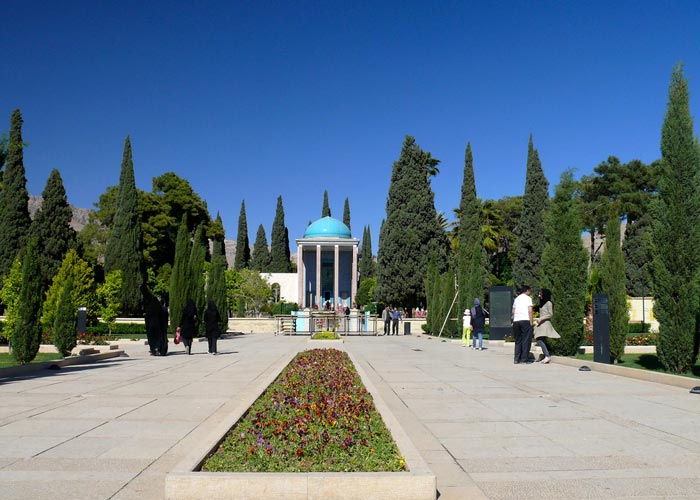
Photo by @dynamosquito on Flickr
* (A khanqah or khaniqah, also known as a ribat – among other terms – is a building designed specifically for gatherings of a Sufi brotherhood, or tariqa, and is a place for spiritual retreat and character reformation.)
The grave is located inside an octagonal edifice with an outstanding azure blue dome on top of it. The ambiance of the Saadi Tomb is much more alluring than its architecture, although it has got its own unique interesting character. A beautiful pond draws your attention to itself, especially when you witness other visitors throwing coins in it.
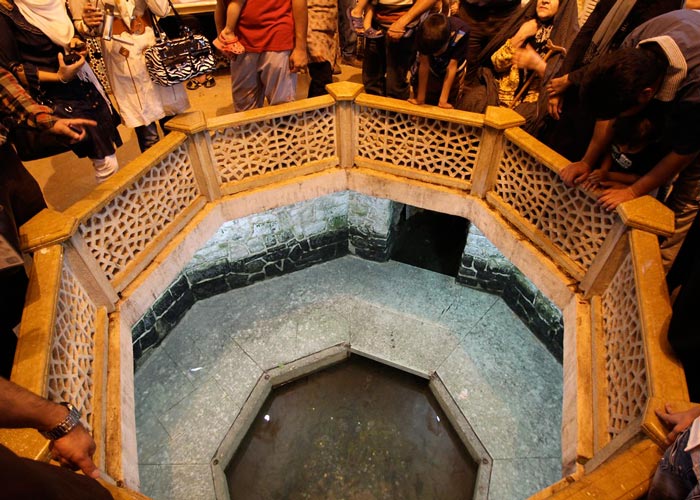
Photo by @reibai on Flickr
#2 Interesting Facts about Saadi Tomb
- Tomb and one of Saadi poems are printed on the ten-thousand-Rial bill.
- The influence of Saadi poet is tangible in the works of the French and German great thinkers and poets such as Voltaire and Goethe.
- A library of original printed books of Saadi poet is also available for the visitors.
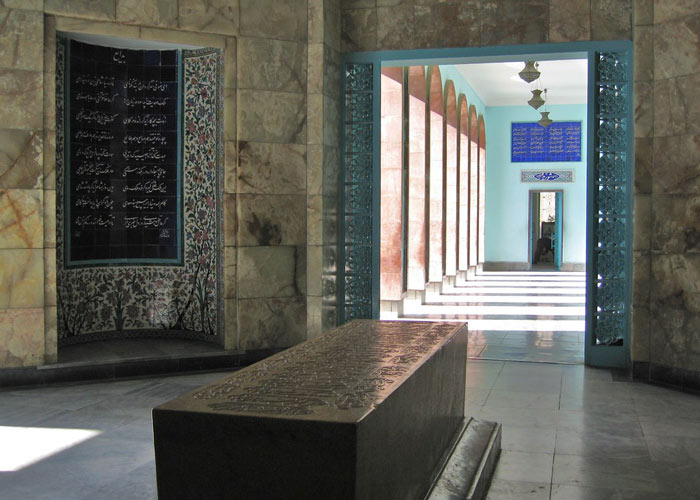
Photo by @Koorosh Nozad Tehrani on Flickr
#3 Saadi Poems
Saadi Poems : Within two years after his return to Shiraz, Saadi wrote his two most famous masterpieces: Bustan and Golestan.
1. Bustan:
- Also known as Bostan (The Orchard)
- Composed in 1,257
- Entirely in verse
- Introducing moral virtues
2. Golestan:
- Also known as Gulistan (The Rose Garden)
- Composed in 1,258.
- Mainly in prose
- Containing stories and personal anecdotes
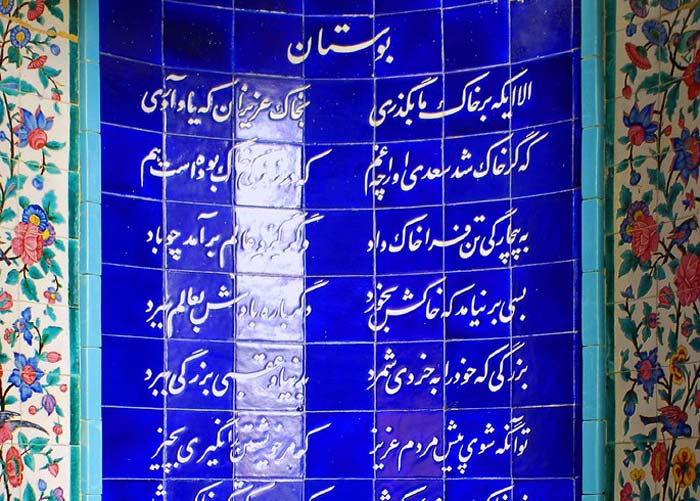
Photo by @youngrobv on Flickr
One particular poem from Golestan became a motto decorating the gate of the United Nations building entrance. Bani Adam, the Children of Adam, is an aphorism calling for the breaking of all barriers:
In Persian:
بنی آدم اعضای یک پیکرند
که در آفرينش ز یک گوهرند
چو عضوى به درد آورد روزگار
دگر عضو ها را نماند قرار
تو کز محنت دیگران بی غمی
نشاید که نامت نهند آدمی
Transliteration :
“Bani Aadam `aazaye yek peikarand
Keh dar aafarinesh ze yek guharand.
Cho `ozvi be dard aavarad rozigaar
Degar ozvahaa raa namaanad qaraar.
To kaz mehnate digaraan bi ghami
Nashaayad ke naamat nahand Aadami”
Rhyming translations by M. Aryanpoor :
Human beings are members of a whole,
In creation of one essence and soul.
If one member is afflicted with pain,
Other members uneasy will remain.
If you’ve no sympathy for human pain,
The name of human you cannot retain!
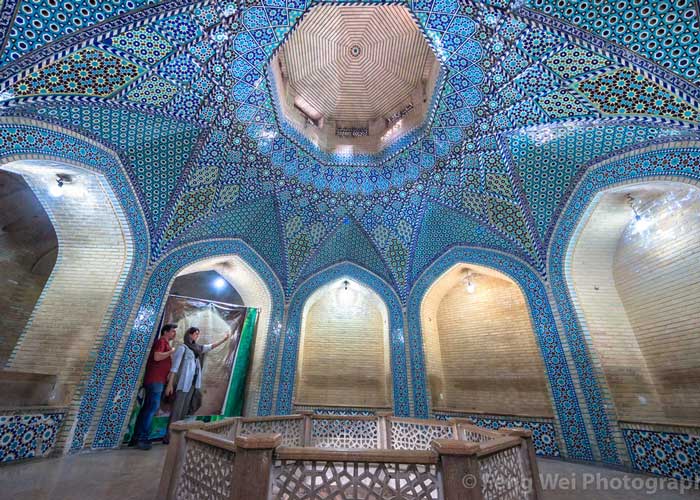
Photo by @Feng-Wei on Flickr
Tomb of Saadi Opening Times
Tomb of Saadi Opening Times are 8 am to 12 am, everyday.



1 Comment
Reyansh · July 9, 2019 at 11:58 am
We visited Saadi tomb last spring. The ambiance was very relaxing and our guide read some poems of his to us, which was awesome!